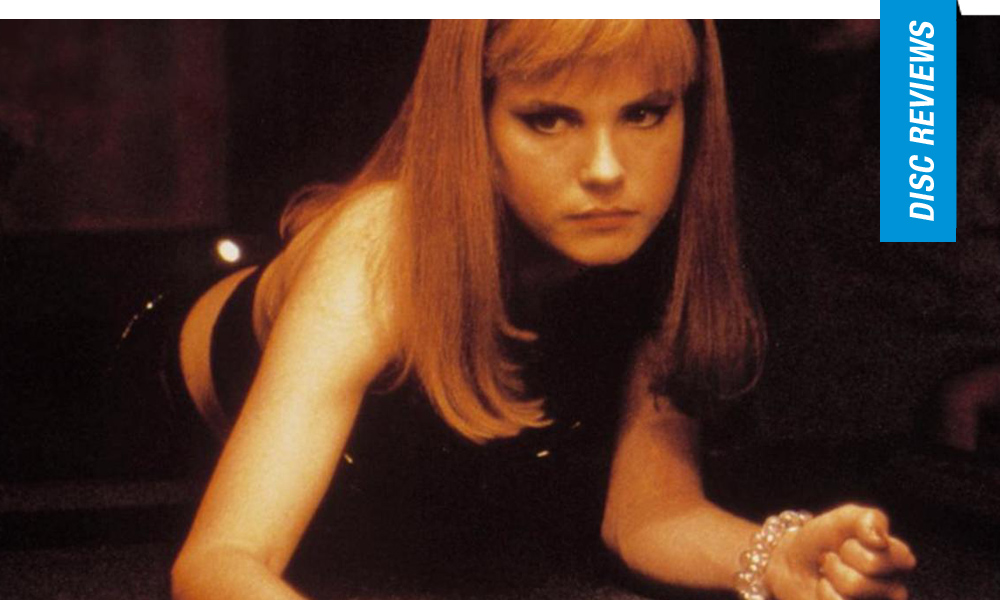The notion of lying about having seen a crime is explored interestingly in The Bedroom Window, hinging on the notion of ‘doing the right thing,’ despite the upset caused to the lives of privileged witnesses. Terry’s motivation to concoct a ridiculous way to satisfy Sylvia’s guilt (which, as played by Huppert, is presented as a passing vocalization of something she ought to feel but is more or less apathetic) is meant as way to impress her with chivalry. She responds in kind, until the situation becomes a bit sticky.
Terry’s relationship with her husband, his boss, is predicated on the usual chauvinist water cooler office talk, and one never quite gets a chance to grasp what they do at work besides guffaw and toss off anachronisms about women. It’s entertaining to see Huppert, still in her thirties here, already resigned to secretive conspiracies of pleasure. This was only her second English language feature after Cimino’s Heaven’s Gate (1980) and it would be another seven years after this before it would happen again in Hal Hartley’s Amateur (1994). Guttenberg, on the other hand, while less spastic than in the camp fest Can’t Stop the Music (1980) is nevertheless an unconvincing lead. Wide-eyed but blank, his performance is more suited for the comic routine he’d come to be known for in the Police Academy series of films, therefore ruining the sense of menace Hanson establishes in its opening moments, which has the somber, spooky ambience recalling classical auteurs like Lang and even (though quite demurely), Argento.
Plot-wise, there’s some similarities with Peter Yates’ obscured 1981 gem Eyewitness, which features William Hurt as a janitor who claims to know something about a recent murder to gain the attention of a newscaster played by Sigourney Weaver, who strikes his fancy. While it’s a ruse, the murderer doesn’t think so and, well, tries to kill him. This dynamic plays out similarly here, but when tragedy actually does strike, Guttenberg seems curiously unaffected, his chipper demeanor hardly skipping a beat as the film switches gears to McGovern, a character whose questionable psychological makeup is conveniently modified to fit the beats of the narrative (after being violently assaulted and nearly murdered just weeks prior, she woos Guttenberg and then suggests she pose as bait to trap the assailant she narrowly escaped from). Although she’s a bit too much of an ingénue to feel right in the role, some critics were a bit harsh about McGovern, including The Washington Post’s Rita Kempley who described the actress during the climax in less than complimentary terms with “She looks like a cross between a female impersonator and Alvin the Chipmunk as she wiggles on her bar stool.” A host of character actors make notable appearances, including Brad Greenquist (of Pet Sematary, 1989, playing the sallow-faced working class killer, Wallace Shawn as his sputtering attorney, Carl Lumbly as a hopeless detective, and some small bits from Maury Chaykin and Mark Margolis.
Disc Review:
Kino Lorber presents Hanson’s The Bedroom Window as part of their Studio Classics label in 2.35:1. Picture and sound quality are well attenuated, particularly for DP Gilbert Taylor’s cinematography in the film’s opening moments with Huppert and again when McGovern is disguised in a dive bar during the third act (the title was Taylor’s second-to-last film, an under-decorated DP who worked on Polanski’s Cul-de-Sac, Repulsion as well as the classic horror film The Omen, and, of course, the first Star Wars film). An audio commentary track from critic Peter Tonguette is the sole extra feature.
Film Rating: ★★/☆☆☆☆☆
Disc Rating: ★★★/☆☆☆☆☆

